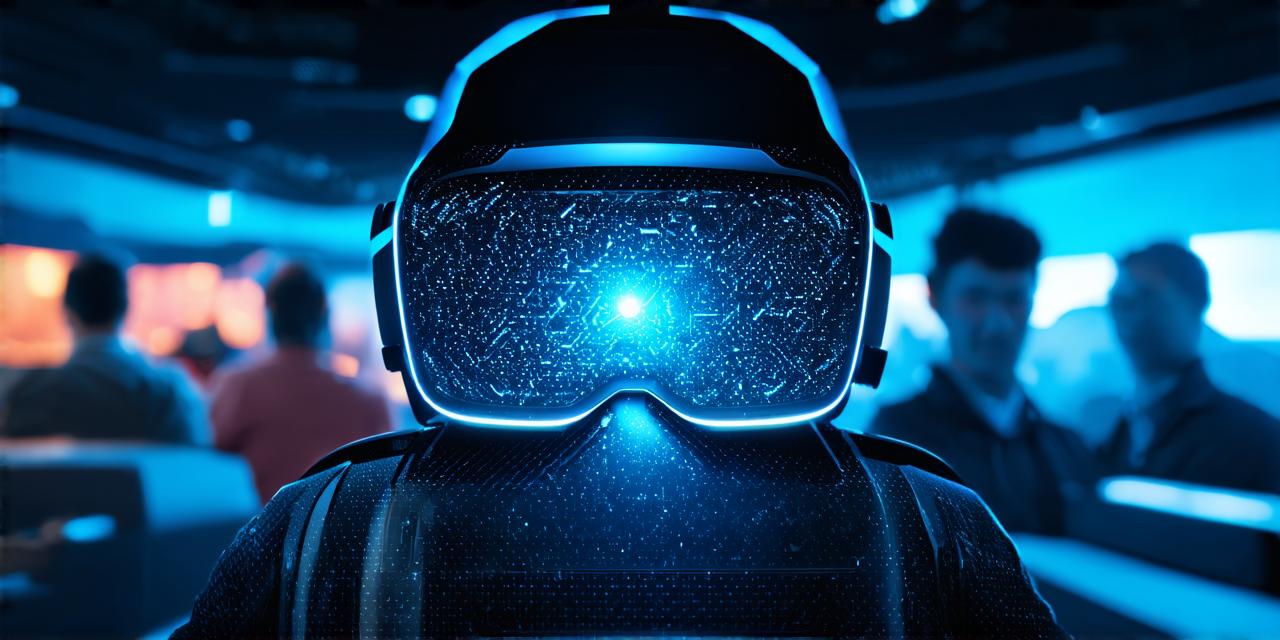Virtual reality (VR) is a technology that allows users to experience a simulated environment as if they were physically present in it. It is a computer-generated simulation of a 3D environment that can be interacted with in real-time. VR has been around for several decades, but recent advancements in technology have made it more accessible and affordable than ever before.
VR headsets are the most common way to experience virtual reality. They typically consist of a screen that displays a 360-degree view of the environment, as well as sensors that track the user’s movement and adjust the image accordingly. Other VR devices include handheld controllers, motion capture suits, and haptic feedback devices that simulate physical sensations in real-time.
Virtual reality is used in a wide range of applications, including gaming, education, healthcare, entertainment, and more. It can be used for training employees in dangerous or high-risk professions, allowing students to explore historical sites and cultures in a safe and controlled environment, and providing patients with immersive experiences that can help with pain management and rehabilitation.
How does Virtual Reality work?
Virtual reality works by creating an immersive experience for the user. This is achieved through a combination of hardware and software that simulates the user’s surroundings in real-time. The most important piece of equipment is the VR headset, which displays a 3D image of the environment.
The VR headset typically consists of a screen that displays a 3D image of the environment, as well as sensors that track the user’s movement and adjust the image accordingly. This creates the illusion of being in a real environment, as the user’s movements correspond to changes in the virtual world.
In addition to the headset, VR systems may also use handheld controllers, motion capture suits, or other devices to provide additional input and feedback to the user. For example, a controller might be used to simulate the feeling of holding an object in the virtual world, while a suit might be used to track the user’s movements more precisely.
What are the benefits of Virtual Reality?
Virtual reality has numerous benefits that make it an attractive option for a wide range of applications. Some of these benefits include:
- Training and simulation
- Education
- Healthcare
- Entertainment
What are the limitations of Virtual Reality?
While virtual reality has numerous benefits, it also has some limitations that must be taken into account. Some of these limitations include:
- Cost
- Motion sickness
- Limited interaction
What are some common Virtual Reality experiences?
Virtual reality experiences come in many different forms, ranging from simple games to complex simulations. Some common virtual reality experiences include:
- Gaming
- Education
- Healthcare
What are some virtual reality development tools?
There are many virtual reality development tools available, ranging from simple game engines to more complex simulation software. Some popular VR development tools include:
- Unity
- Unreal Engine
- Blender
How do you get started with Virtual Reality development?
If you are interested in developing virtual reality experiences, there are several steps you can take to get started:
- Choose a platform: Decide which virtual reality platform you want to develop for. This will determine which tools and software you need to use.
- Learn the basics: Familiarize yourself with the basics of virtual reality development, including how to create 3D models, animations, and interactions.
- Choose a development tool: Select a development tool that is suitable for your needs. This could be a game engine like Unity or Unreal Engine, or a 3D modeling software like Blender.
- Create a prototype: Start by creating a simple prototype of your virtual reality experience. This will help you get a feel for how the technology works and identify any potential issues early on.
- Test and refine: Test your prototype with users and gather feedback to refine your design and improve the user experience.
- Publish and distribute: Once you are satisfied with your virtual reality experience, publish it on the appropriate platform and distribute it to your target audience.
Summary
Virtual reality is a rapidly growing technology that has numerous applications in gaming, education, healthcare, and entertainment. While there are some limitations to virtual reality, it offers a highly immersive and interactive way to experience the world around us. If you are interested in developing virtual reality experiences, there are many tools and resources available to help you get started.
